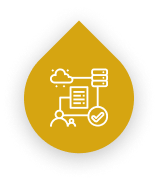Design for Manufacturing and Assembly


Integrated Digital Delivery (IDD)
Integrated Project Delivery (IPD)

Areas covered by IDD



Engaging stakeholders to achieve optimised and coordinated design that meets client's, regulatory and downstream requirements.






Translating design to standardised components for automating off-site production.


Engaging stakeholders to achieve optimised and coordinated design that meets client's, regulatory and downstream requirements.






Translating design to standardised components for automating off-site production.





Real time monitoring for operations and maintenance to enhance asset values.





Just in time delivery, installation and monitoring of on-site activities to maximise productivity and minimise rework.





Real time monitoring for operations and maintenance to enhance asset values.





Just in time delivery, installation and monitoring of on-site activities to maximise productivity and minimise rework.



IDD covers the following four areas
How does IPD work?


- The project owner hires a full team.
- The team signs a contract.
- The team approves the design.
- Once the building permits are in, construction begins.


3 Key Differences


Advantages of the IPD
- Promotes clear communication
- Incentivizes quality
- Increases productivity
Disadvantages of the IPD
- Individual performance affects the entire project
- Group decision-making can slow the process down
- High project costs


